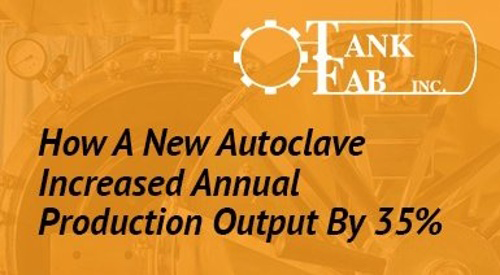Editor’s note: This post was originally published on 5/10/18 and has been updated for accuracy and comprehension.
The American Society of Mechanical Engineers is an organization made up of professionals from various sectors who work together to create safety standards for manufacturing.
The consequences of not following ASME Code and safety standards when manufacturing pressure vessels could be dire.
An enormous amount of energy builds up inside the tanks, which are filled with gases and volatile liquids.
Shortcuts and loopholes in the construction process can lead to leakage, explosion and fatal accidents.
When you’re hiring a manufacturer to build an autoclave, be sure they follow ASME standards.
Founded in 1880, the American Society of Mechanical Engineers (ASME) was designed by a small yet highly influential group of industrialists whose main focus was on fostering improvements in engineering.
The ASME is a not-for-profit organization of project managers, engineers, executive leaders and even counts college students among its ranks.
Since its formation, the organization has worked to develop a set of standards for manufacturing.
The ASME Code and safety standards have had a huge impact on manufacturing, not just in the United States but in many countries around the world.
Following a series of boiler explosions that took the lives of several people shortly after their formation, the ASME set forth a Boiler Testing Code in 1884.
Later, in 1915, it created the Boiler and Pressure Vessel Code.
In 1919, with the collaboration of the ASME and other engineering organizations, The American Engineering Standards Committee was created. The goal of this committee was to oversee the implementation of national standards.
Today the group is now known as the American National Standards Institute (ANSI).
The ASME, among other groups, develops the standards and the ANSI makes sure that they are being followed.
 How ASME Code regulates pressure tanks
How ASME Code regulates pressure tanksThe ASME is widely known for its standards for the manufacturing of pressure tanks.
While the group originally started with boilers, ASME Code and safety standards have grown to cover just about every aspect of pressure tank design and creation.
ASME Section 8 consists of many sections and covers everything to do with the design and manufacturing pressure vessels, including material certifications and welding standards.
In particular, the ASME Section 8 (Boiler and Pressure Vessel Code) is one of the most important and is even used in countries all around the world.
The ASME Code is a set of safety standards manufacturers must abide by. The Boiler and Pressure Code, Division 8, Section 1 speaks directly to pressure vessel manufacturers.
The ASME Code and safety standards are designed to create industrial collaboration.
However, one of their main focal points is safety, with the goal of preventing accidents.
They cover all kinds of activities, including heavy lifting, elevators and railroad transportation.
The ASME Code and safety standards have had a huge impact on manufacturing throughout the United States.
These standards are so well known and respected that they have even impacted manufacturing in many other countries in the world, particularly those who export to the US.
Many countries – whether or not they do business with the US – have adopted ASME standards simply because they deem them suitable for their needs.
At Tank Fab, we strive for excellence.
All of our pressure tanks are designed with ASME Code and safety standards in mind – in particular, the Boiler and Pressure Code, Section 8, Division 1.
In fact, we only manufacture ASME tanks to the Division 1 code.
When it comes to quality and safety, we don’t mess around.
Our staff will build your tank to ASME standards, ensuring your safety, as well as helping with maintenance and inspection needs.